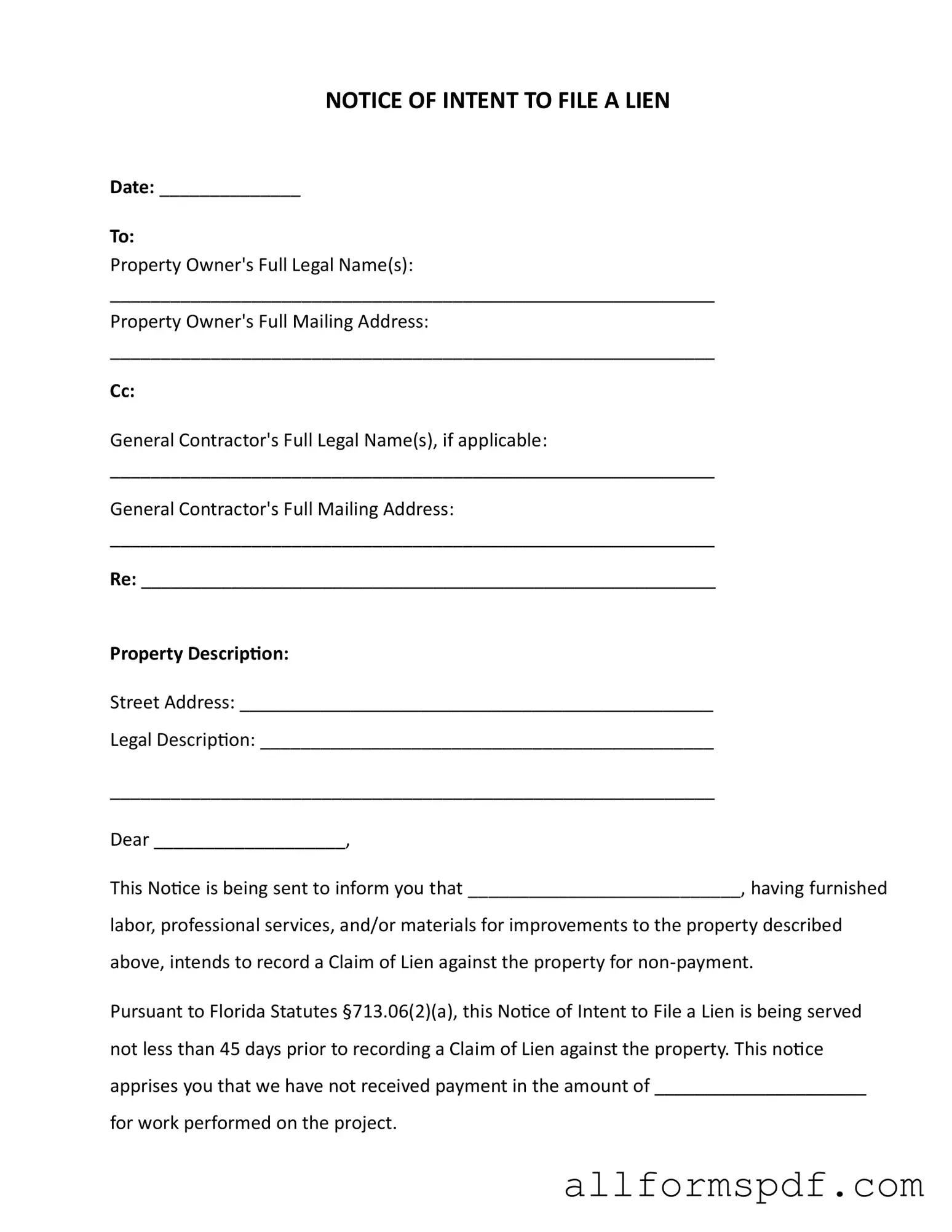Filling out the Intent to Lien form in Florida can be straightforward, but many people make common mistakes that can jeopardize their claims. One frequent error is failing to provide the correct date at the top of the form. This date is crucial as it marks the beginning of the 45-day notice period. Without it, the timeline for potential lien filing becomes unclear, potentially affecting legal standing.
Another mistake involves the property owner's name. The form must include the full legal name(s) of the property owner(s). Omitting middle names or using nicknames can lead to complications. A lien must be filed against the correct legal entity to be enforceable, so accuracy is essential.
In addition, people often neglect to include the full mailing address of the property owner. This oversight can result in failure to properly serve the notice, which is a critical step in the lien process. If the notice does not reach the intended recipient, the lien may be deemed invalid.
Another common issue is the lack of detail in the property description. The form requires both the street address and the legal description of the property. A vague or incomplete description can lead to confusion and may prevent the lien from being enforceable.
People also frequently forget to specify the amount owed in the notice. This figure should clearly state the total due for the work performed. Leaving this blank or providing an incorrect amount can undermine the seriousness of the claim and complicate future legal proceedings.
Many individuals do not realize the importance of the certificate of service. This section must be completed accurately to show that the notice was delivered to the property owner. Failing to fill this out correctly can lead to disputes about whether the notice was properly served.
Some filers make the mistake of not checking the box for the method of delivery. Whether it was sent via certified mail, hand delivery, or another method, this detail is important for establishing the notice's validity. Not indicating this can create ambiguity in the process.
Another error is using a generic salutation instead of addressing the property owner by name. Personalizing the notice adds a level of professionalism and clarity, which can be beneficial in resolving payment disputes amicably.
People often overlook the need for a signature on the form. The signature of the individual sending the notice is essential for validation. Without it, the notice may not be considered legitimate.
Finally, many individuals fail to keep a copy of the completed form for their records. Retaining a copy is vital for future reference, especially if legal action becomes necessary. Without documentation, it can be challenging to prove that the notice was sent and received.
